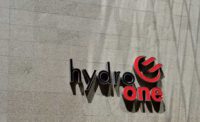The Liberal Trudeau government’s proposal to harness private investment dollars for public-works projects through a national infrastructure bank is being praised as a good first step, but the devil will be in the details, industry experts caution.
Finance Minister Bill Morneau announced the plan for the Canada Infrastructure Bank on Nov. 1 in his fall financial overview. The proposal also included $60 billion to planned infrastructure spending over the next 12 years beyond the $90 billion in last spring’s national budget. As an independent agency able to make impartial recommendations on the economic merits and priorities of various projects, the bank would use about $26 billion in government seed money to leverage private investment. The Liberals’ plan would also create a new “Invest in Canada Hub” marketing program to attract foreign investment and ease some restrictions non-Canadian investors now face.
Morneau, Premier Justin Trudeau and Infrastructure Minister Amarjeet Sohi made their first big infrastructure pitch to global investors on Nov. 14 at a conference in Toronto. The attendees included central banks, sovereign wealth funds, insurers, asset management firms and pension funds. Canadian media report that Morneau also was set to pitch U.K. investors last week.
Officials hope to entice more actions— such as the plan by Caisse de dépôt et placement du Québec, Canada’s second-largest pension fund—to help finance and manage development of a $4-billion light-rail line in Montreal. “Historically, pension funds didn’t want to take construction risk,” said Maxim Sytchev, lead construction-sector analyst at Toronto investment bank National Bank Financial.
Matti Siemiatycki, a University of Toronto associate professor and infrastructure planning expert, told ENR the new bank could work with provincial and municipal governments to pick projects, prioritize them and ensure they are delivered effectively. “I think there is a big opportunity here to make this a center of excellence,” he added.
But he and other observers say outside investors’ interest will depend on financial returns on projects ranging from roads and bridges to wastewater-treatment plants. “It’s a good start, but it’s just a start,” Siemiatycki said. “In Canada, issues we face in terms of our infrastructure are only partially finance-related.” An acceptable rate of return likely could require tolls and user fees—a hot-button issue in Canada, where there is only one major toll road, Highway 407 in Ontario. “There is no shortage of investors,” Siemiatycki said. “Our issue in Canada is … having the revenue to pay back any spending.”
Even as the Trudeau government has talked up the idea of enticing private investors to pump money into infrastructure projects, it cancelled plans to put tolls on Montreal’s $2.9-billion Champlain Bridge, now under construction. “It’s been called the third rail of politics,”
Siemiatycki said. The opposition strongly criticized the investment push. Guy Caron, a New Democratic Party member of Parliament for Quebec, said it was not in the Liberals’ platform last fall and would be too costly for Canadians.
Shortly before the Nov. 1 announcement, Drew Fagan, a former Ontario deputy minister of infrastructure, argued for a national strategy for public-works spending in a report for the Public Policy Forum, a think tank. The bank could play a key role advising political leaders on infrastructure “in a way that gives real credibility and strategy on what projects make sense” while “giving them the backbone to push back against short-term values and political expediency,” he said, adding that the bank can be crucial in attracting private investment dollars, with private-sector discipline in revenue generation and contract management.
Fagan also argued that tolls and user fees could be palatable, provided they are rolled out in the right way, with funds specifically earmarked for new or upgraded infrastructure, rather than deposited in a general fund. The toll or fee should be announced well before it actually takes effect and should be used only “in circumstances where there are alternatives for those who prefer not to pay or can’t afford to pay,” Fagan writes. “Rome wasn’t built in a day, but, after last week, I am feeling pretty good. Things are heading in the right direction,” he said.
The new bank should also focus on projects that are large enough to attract interest from investors. That means a minimum of $100 million, said Andy Manahan, a spokesman for the Residential and Civil Construction Alliance of Ontario, citing a recommendation by Siemiatycki. “They are looking for multibillion-dollar projects that are long-term and stable,” he said. Even so, municipalities have concerns over whether seed funds for the bank, set to launch next year, would compete with monies promised by the federal government for local projects.
Michael Fenn, a management consultant on the OMERS pension fund in Ontario and former province deputy minister, predicts more interest from pension funds, including big Canadian funds now investing overseas, if they can earn a rate of return at a minimum of 7% to 9%. But he says it would be an oversimplification to argue that tolls and user fees are the only way to achieve those returns. Fenn sees other options, including selling an interest in a particular project or piece of infrastructure. “If the opportunity presents itself in Canada, it will be taken seriously,” he said, although noting he is not speaking in any official capacity for the pension fund. “There is certainly a desire by Canadian pension funds to invest more at home … if they can meet investment criteria.” In a Nov. 6 Canadian TV interview, Morneau declined to confirm if infrastructure bank financing would include more tolls and fees.
There has been, since 2011, a doubling of institutional investors with stakes in infrastructure projects globally; pension funds account for one-third of that, Fagan says in his report. Even so, the funds account for less than 1% of the global total. “More can be done to attract those funds and to speed up the process of filling infrastructure gaps and jumping on new opportunities,” Fagan wrote.




Post a comment to this article
Report Abusive Comment